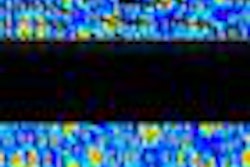Tuesday, November 27 | 3:50 p.m.-4:00 p.m. | SSJ08-06 | Room E353C
This scientific session will discuss the potential role for a multienergy computer-aided detection (CAD) technique with minimal-preparation multienergy virtual colonoscopy.Both conventional and virtual colonoscopy (also known as CT colonography or CTC) utilize cathartic bowel preparation, which has been identified as the single most important reason for low patient adherence to colorectal screening, said presenter Janne Nappi, PhD, of Massachusetts General Hospital.
While the noncathartic preparation could improve patient adherence, its challenges have remained largely unaddressed, she said.
"We believe that computer-aided detection could be used to implement effective interpretation of noncathartic CT colonography, but technical challenges such as partial-volume fecal tagging artifacts complicate accurate detection of subtle lesions," she said. "Therefore, we use multienergy CT colonography to improve the detection accuracy in such challenging cases, because it provides more precise information about the chemical composition of colonic materials than what is possible with conventional single-energy CT colonography."
The research team developed an automated multienergy CAD scheme, and preliminary testing results indicated clinically acceptable detection accuracy for significant colorectal lesions. It also has the potential to outperform conventional CAD in minimal-preparation CTC, Nappi said.
"The accuracy is improved, because flat lesions and small polyps can be differentiated from partial-volume tagging artifacts more precisely than with single-energy CT," she said. "Therefore, computer-aided detection for multienergy CT colonography could represent the future of noncathartic CT colonography and colorectal screening examinations."





















